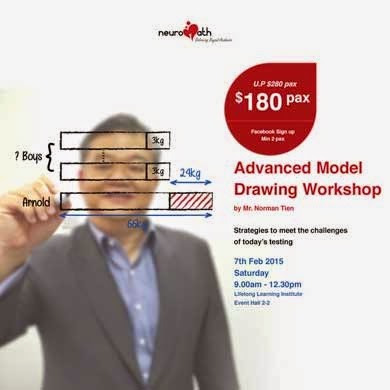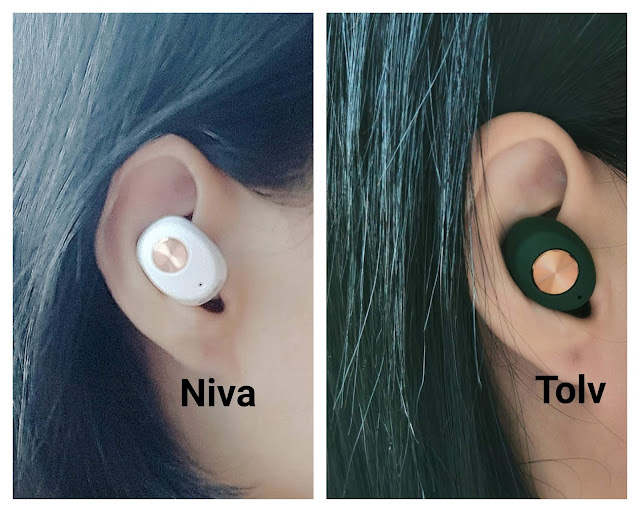Math March Holiday Workshop by NeuroScholars
[Sponsored Post]
Model Drawing is unique to Singapore and I am quite foreign to it. As AJ started Primary 3 this year, I thought I should enroll him to a Model Drawing workshop with Centre X during the December school holiday last year.
To my dismay, he came back, after the 2-half day workshops, as confused as before! I knew that I had to do something since I can’t teach him Model Drawing efficiently yet.
I am grateful to be offered a free parent workshop on this by Neuroscholars. Norman Tien, the founder of Neuroscholars, taught the parents himself. I was awed by his knowledge and the various strategies and tactics he used to solve those model drawing problem sums. I had my mind blown that morning.
At the start of the workshop, he shared the 9 rules to drawing models which I think are very useful to know:
1. Size
The thickness of the model is important. If it is too small, it cannot be seen clearly, thus increasing careless mistakes. He said, the ideal thickness is the size of a Mcdonald’s French Fry. Yumz!
2. Proportional Unit Size
Students not taught properly may end up drawing unit size of the model unequally making it difficult to compare. Keeping the unit size proportional is more pleasing to the eyes.
3. Subdivision with Extended Dotted Lines
When one starts sub-dividing a unit with a solid line, it becomes difficult for one to keep track if that is the original unit or a sub-divided unit as he goes along. Norman recommends using dotted lines to sub-divide units instead.
4. Shading with Diagonal Lines
Some students shade a unit like colouring a unit or worse, shade a unit with vertical lines. These are taboos as solid shading is a waste of time. Shading with vertical lines gets one confused with subdivision. Shading with diagonal lines is highly recommended
5. Same Starting Line
Models that are drawn with different starting line (from the left) cannot be compared easily. One should always start the models at the same starting line.
6. Draw Top Bottom for Comparison
Models that are drawn side by side cannot be compared easily too. It is better to arrange the models in top and bottom manner to allow easy comparison and labeling.
7. Known and Unknown Units
Our eyes play tricks on us all the time. If a unit of unknown value is drawn the same size as a unit of known value, our eyes will trick us into thinking that the unknown value is same value as the known value. Thus, it is important to draw the unit of unknown value to be of different size as the unit of known value.
8. Updating
It is essential to keep updating the model with information as the problem sum progresses otherwise information may be forgotten or distorted.
9. Break into Stages
We were also given exercises to try on our own first before Norman went through the answer step by step. Truth be told, being proficient in Model Drawing, Norman explained the steps clearly, making each problem sum seemingly easy to do. Of course, when we did them on our own, many of us did struggle and at some point of time I even attempted using Algebra. :P
This March school holiday, NeuroScholars will be having some interesting workshops for Upper Primary and Secondary 4 students. Do take time to take a look at them and sign up if any of them interest you.
NeuroScholars
Website: http://www.neuroscholars.com/
Facebook: https://www.facebook.com/neuroscholars
Model Drawing is unique to Singapore and I am quite foreign to it. As AJ started Primary 3 this year, I thought I should enroll him to a Model Drawing workshop with Centre X during the December school holiday last year.
To my dismay, he came back, after the 2-half day workshops, as confused as before! I knew that I had to do something since I can’t teach him Model Drawing efficiently yet.
I am grateful to be offered a free parent workshop on this by Neuroscholars. Norman Tien, the founder of Neuroscholars, taught the parents himself. I was awed by his knowledge and the various strategies and tactics he used to solve those model drawing problem sums. I had my mind blown that morning.
At the start of the workshop, he shared the 9 rules to drawing models which I think are very useful to know:
1. Size
The thickness of the model is important. If it is too small, it cannot be seen clearly, thus increasing careless mistakes. He said, the ideal thickness is the size of a Mcdonald’s French Fry. Yumz!
2. Proportional Unit Size
Students not taught properly may end up drawing unit size of the model unequally making it difficult to compare. Keeping the unit size proportional is more pleasing to the eyes.
3. Subdivision with Extended Dotted Lines
When one starts sub-dividing a unit with a solid line, it becomes difficult for one to keep track if that is the original unit or a sub-divided unit as he goes along. Norman recommends using dotted lines to sub-divide units instead.
4. Shading with Diagonal Lines
Some students shade a unit like colouring a unit or worse, shade a unit with vertical lines. These are taboos as solid shading is a waste of time. Shading with vertical lines gets one confused with subdivision. Shading with diagonal lines is highly recommended
5. Same Starting Line
Models that are drawn with different starting line (from the left) cannot be compared easily. One should always start the models at the same starting line.
6. Draw Top Bottom for Comparison
Models that are drawn side by side cannot be compared easily too. It is better to arrange the models in top and bottom manner to allow easy comparison and labeling.
7. Known and Unknown Units
Our eyes play tricks on us all the time. If a unit of unknown value is drawn the same size as a unit of known value, our eyes will trick us into thinking that the unknown value is same value as the known value. Thus, it is important to draw the unit of unknown value to be of different size as the unit of known value.
8. Updating
It is essential to keep updating the model with information as the problem sum progresses otherwise information may be forgotten or distorted.
9. Break into Stages
Students have the tendency to use arrows to interpret facts. I know, because AJ did that before. But Models with arrows flying everywhere are not easy to interpret, especially when it comes to complicated problem sums. Thus, breaking down the model into different stages will be easier.
We were also given exercises to try on our own first before Norman went through the answer step by step. Truth be told, being proficient in Model Drawing, Norman explained the steps clearly, making each problem sum seemingly easy to do. Of course, when we did them on our own, many of us did struggle and at some point of time I even attempted using Algebra. :P
But this experience has taught me that:
(1) with the RIGHT strategies and tactics, Math problem sums can be solved pretty easily, in a systematic way.
(2) holiday programmes is a good experiment for one to 'experience' with a new enrichment centre.
After that December school holiday programme on Model Drawing with Centre X, I know I will never send AJ there any more.
After that December school holiday programme on Model Drawing with Centre X, I know I will never send AJ there any more.
This March school holiday, NeuroScholars will be having some interesting workshops for Upper Primary and Secondary 4 students. Do take time to take a look at them and sign up if any of them interest you.
P3 - P6 Holiday workshop registration link: http://www.neuromathacademy.com/2015marholidayprogramme/p3top6/
Sec 4 Holiday Workshop registration link: http://www.neuromathacademy.com/2015marholidayprogramme/sec4/
NeuroScholars
Website: http://www.neuroscholars.com/
Facebook: https://www.facebook.com/neuroscholars
 |
| Learning Math |












Comments
Post a Comment